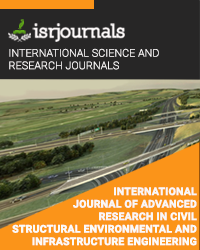experimental study on transparency concrete
Dhilip kumar,RAJKUMAR.S
Published in International Journal of Advanced Research in Civil,Structural,Environmental and Infrastructure Engineering and Developing
ISSN: 2320-723X Impact Factor:1.7 Volume:3 Issue:1 Year: 03 March,2017 Pages:344-351

Abstract
Light transmitting concrete (Transparency concrete) is one of the advanced concrete which is used to reduce the self-weight of the concrete. This is lighter than conventional concrete. Its main specialty is its low density and thermal conductivity. The main advantages of Transparency concrete are reduction in dead weight, faster building rate in construction, lower haulage, handling cost. Light translucent concrete is one of the fiber reinforced concrete which is used for aesthetic application by incorporating the optical fibers in concrete. An optical fiber (or optical fiber) is a flexible, transparent fiber made of glass (silica) or plastic, slightly thicker than a human hair. It can function as waveguide, or “light pipe” to transmit light between the two ends of the fiber. Our project deals with Transparency light translucent concrete, in which coir pith is used partially instead of sand to reduce its self-weight. In Tamil Nadu and Kerala the availability of coconut is high so we used it as an additional material. Optical fibers are one which helps for transmission of light through fiber. And we are not using coarse aggregate due to light transmitting concrete, so this type of concrete brings more advantage in smart construction.
Kewords
optical fibers, lower haulage, transmission, low weight
Reference
#1.ZHI ZHOU et al (2006), He reported that the light guiding performance of concrete materials is completely determined by the internal POFs area ratio and the surface roughness in certain sections. POF based transparent concrete could be regarded as an art which could be used in museums and specific exhibitions rather than just a construction material. #2.B.He et al. (2011), He published a study on smart TC, which experimentally explored the light emission properties of TC in the laboratory. Building on his research, this study took a step further by modeling light transmission and studying heating rate of the TC panel when exposed to sunlight throughout the year. Interestingly, development of light-transmitting facades is gaining more interest. #3.C.BASMA F. BASHBASH et al (2013)He discussed about the development of a light transmitting concrete using plastic optical fiber, which will help to reduce the consumption of electric energy. They concluded that an optical fiber can be easily combined with concrete and that the POF could provide a steady light transmitting ratio. #5.SHANGHAI CHINA (WORLD EXPO 2010), Italy modeled its pavilion out of TC using approximately 4,000 blocks. The blocks were rather heavy to be used as a facade subsystem in buildings. Another product featured plastic fibers arranged in a grid, namely Pixel Panels, developed by Bill Price of the University of Houston. These panels transmitted light in a pattern resembling thousands of tiny stars in the night sky. University of Detroit Mercy also developed a process to produce translucent panels made of Portland cement and sand and reinforced it with a small amount of chopped fiberglass. These panels, which were only 2.5 mm thick at their centers, were thin enough to be translucent under direct light.

